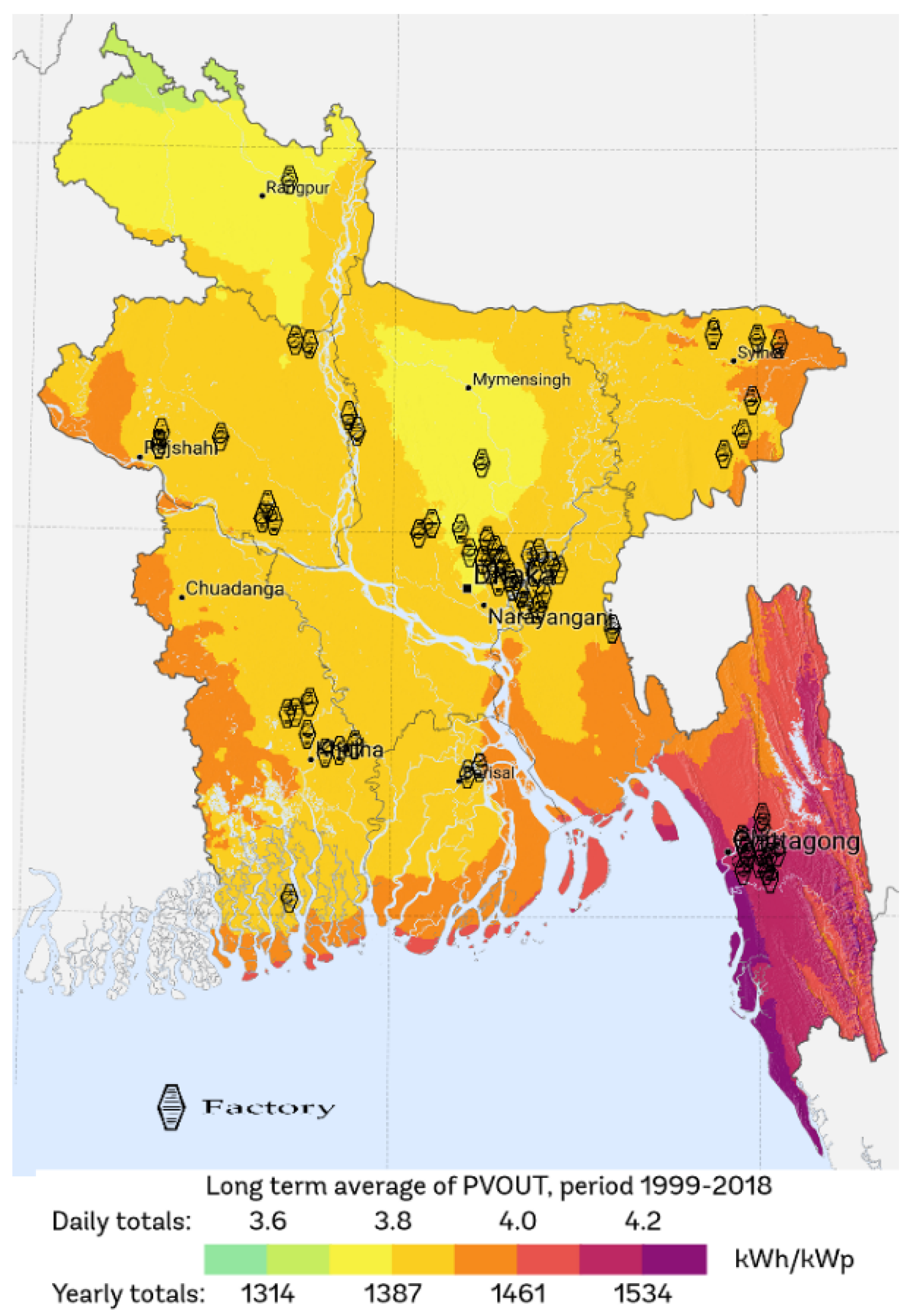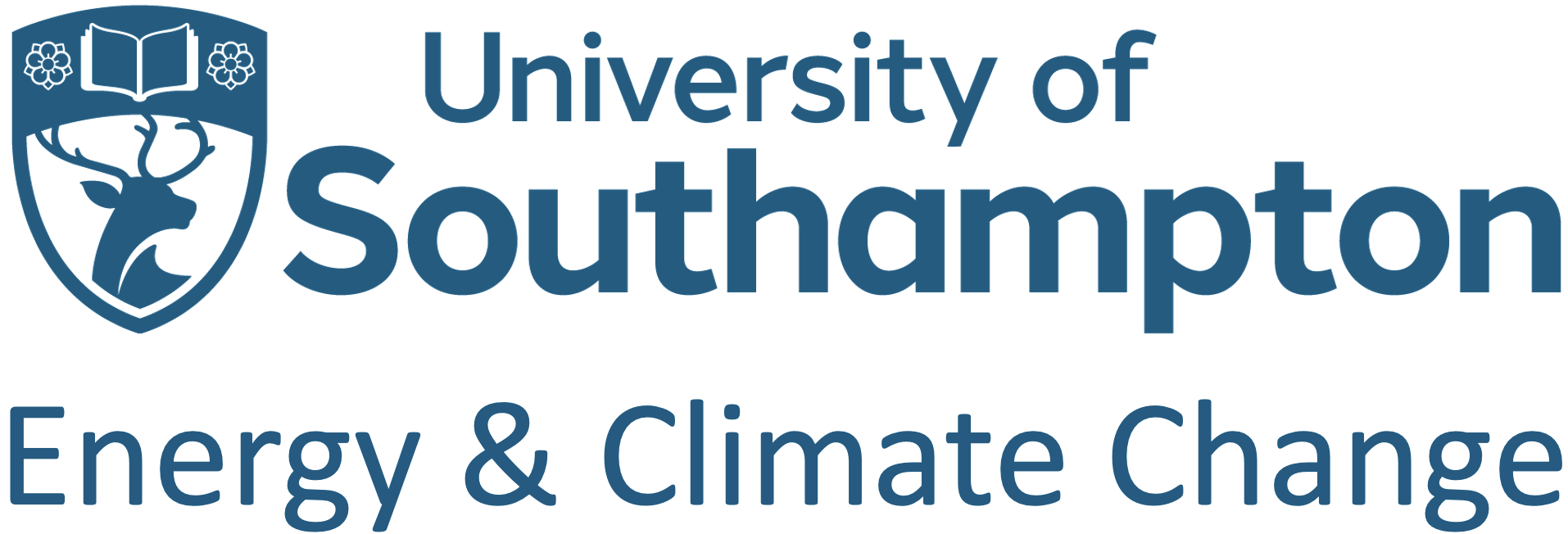An ECCD paper ‘Solar Power Potential from Industrial Buildings and Impact on Electricity Supply in Bangladesh‘ prepared by PhD student Muhammad Talut and supervisors, Prof. AbuBakr Bahaj and Prof. Patrick James, according to the journal Energies MDPI, has generated a lot of interest since its publication at the end of May 2022 with – Views: 516, Downloads: 778.
The work arose through a discussion about identifying options for a country like Bangladesh which has aims to increase its renewable share of electricity to 10% by 2030. However, due to its limited wind resources, solar energy seems to be most appropriate to deliver such a target. This option is also difficult as Bangladesh in a land-scarce country. To address increasing the renewable fraction and overcome the presented challenges the work looked at opportunities provided by other surface areas in the country with strong electrical infrastructure.

PV output from Global Solar Atlas using the G.P.S. in Bangladesh. The locations of the 67 factories are also shown (Talut, 2022)
An ECCD paper ‘Solar Power Potential from Industrial Buildings and Impact on Electricity Supply in Bangladesh‘ prepared by PhD student Muhammad Talut and supervisors, Prof. AbuBakr Bahaj and Prof. Patrick James, according to the journal Energies MDPI, has generated a lot of interest since its publication at the end of May 2022 with – Views: 516, Downloads: 778.
The work arose through a discussion about identifying options for a country like Bangladesh which has aims to increase its renewable share of electricity to 10% by 2030. However, due to its limited wind resources, solar energy seems to be most appropriate to deliver such a target. This option is also difficult as Bangladesh in a land-scarce country. To address increasing the renewable fraction and overcome the presented challenges the work looked at opportunities provided by other surface areas in the country with strong electrical infrastructure.
Being a globally leading producer of commodities, Bangladesh has a considerable number of large manufacturing plants with appropriate roofs that could be used for deploying solar energy conversion systems at scale. A methodology is presented which identified and assessed 6045 such plants, which have roof areas ranging from 100 m2 to 50,000 m2 and modelled the deployment of solar photovoltaic (PV) technology that can provide power through site available and appropriate grid infrastructure. Such deployment also takes advantage of the country’s net metering regulations to enhance the case for such power generation deployment. The presented techno-economic assessment showed that around 7.4 GWp of PV capacity can be achieved on such roofs with a corresponding annual electricity generation of 11 TWh. This represents more than 6% of Bangladesh’s current electricity consumption and more than half of the 2030 target. Furthermore, the deployment will save 13,000 acres of farmland, as well as providing power through site available grid infrastructure saving on investment if the systems are to be deployed elsewhere on land. These results are likely to influence policy to support the presented proposition, not only in terms of increasing the renewable energy share in the country’s electricity supply mix but also in conserving much-needed land for agriculture.
